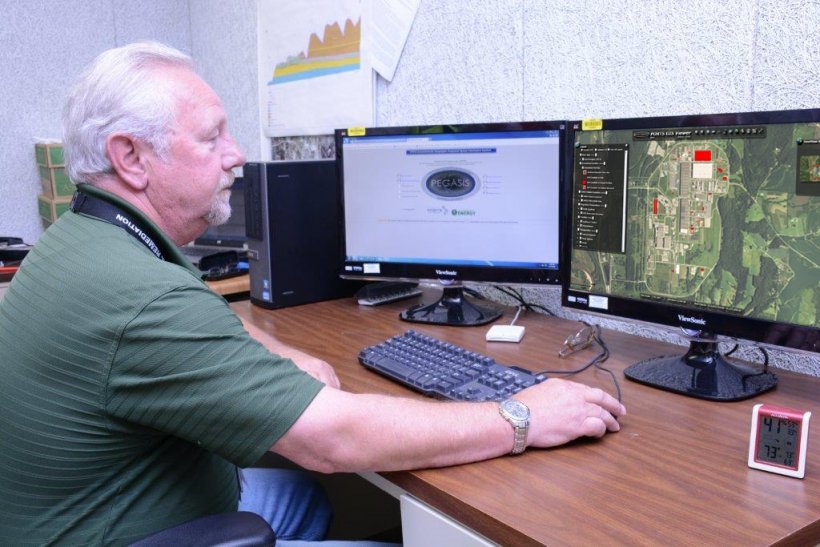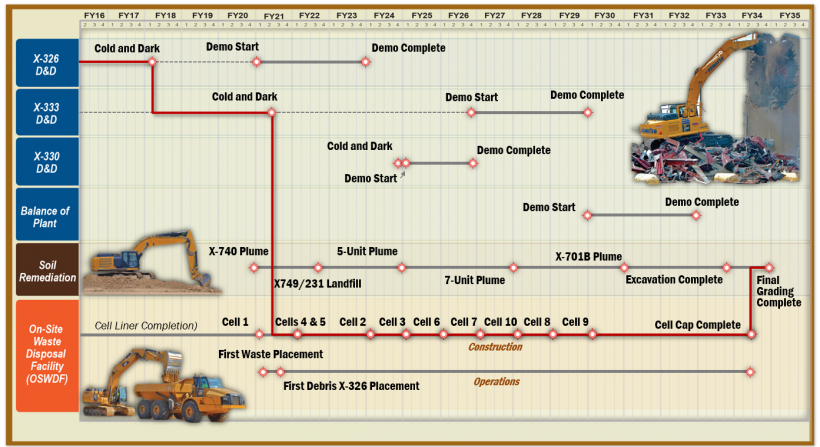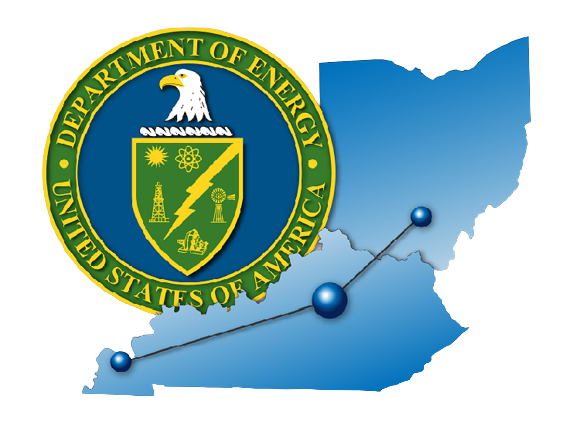Portsmouth Cleanup
Decades of uranium enrichment and support activities at the Portsmouth site required the use of a number of standard and specialized industrial chemicals and materials. Gaseous Diffusion Plant (GDP) operations generated hazardous, radioactive, mixed (hazardous and radioactive), and nonchemical (sanitary) wastes. Past operations also resulted in soil and groundwater contamination at areas located within plant boundaries.
The Environmental Cleanup Program was established by DOE in 1989 to evaluate and take appropriate actions to ensure protection of human health and the environment. Cleanup activities include site investigations, environmental response actions, and decontamination and decommissioning (D&D) of inactive facilities. Decisions and projects consider risk analysis along with programmatic goals, legal requirements, regulatory milestones, stakeholder input, and available funding.
Cleanup is predominantly funded through the Uranium Enrichment D&D Fund shared among all three GDPs, therefore the cleanup strategy takes into consideration the ramping down of the Oak Ridge GDP cleanup and the future GDP cleanup requirements at the Paducah site, along with the Portsmouth site cleanup mission.

Environmental Remediation
DOE is managing the cleanup of environmental media (e.g., soil and groundwater) impacted by past site operations to meet cleanup levels set forth in the Resource Conservation and Recovery Act (RCRA) Corrective Action Program and approved by DOE and the Ohio Environmental Protection Agency to protect human health and the environment. Past operations have led to environmental contamination from the degreasing solvent trichloroethylene (TCE), radionuclides, heavy metals, and polychlorinated biphenyls (PCBs).
Ongoing environmental monitoring throughout the Portsmouth site measures radiological and chemical parameters in air, water, soil, sediment, and biota (animals, vegetation, and crops) to assess potential impacts to human health and the environment from contaminants released by site operations. Additional environmental monitoring efforts have been implemented to ensure any releases of contaminants to the air, soil or groundwater are detected and addressed at the earliest possible time.
In 2021, the safe, controlled structural demolition of the large X-326 uranium-enrichment Process Building began, and the first potential environmentally impacted soils have been excavated and placed in the recently constructed engineered On-Site Waste Disposal Facility (OSWDF). These excavations within the main plant area help supply the required fill material in the waste facility. The result upon completion will be an expansive plant area available for transfer to the community for economic development.
All water runoff from the demolition project and the OSWDF is being detained and treated in specially designed facilities.
Remedial actions have previously been and will continue to be implemented at a number of areas on site to reduce or eliminate contamination. Soils have been excavated and chemically treated to reduce sources for groundwater contamination. Groundwater plumes that developed from past operations are currently being managed by pump and treat systems and engineered barriers. Regular groundwater monitoring is performed to assess the effectiveness of remedial actions. The key strategies for the Portsmouth Site are to continue operations of groundwater treatment facilities in support of installed remedies.

After transfer of the plant facilities back to DOE, in-depth and comprehensive evaluations, and input from stakeholders, decisions on cleanup activities were finalized and a lifecycle baseline was developed to map-out major cleanup projects. The lifecycle baseline coordinates projects for D&D, remediation, waste management, and future use efforts. A critical path was identified to align resources and synchronize schedules for the safest and most effective and efficient cleanup results to meet or exceed regulatory requirements.
